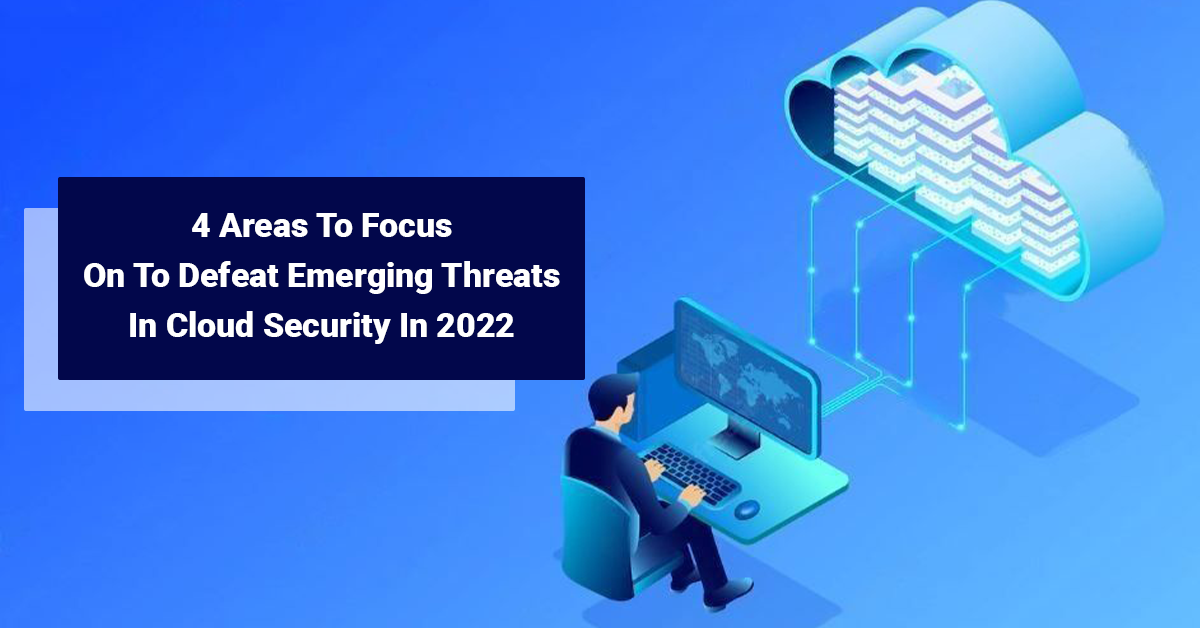In recent years, the popularity of Cloud Security has grown, and there are no indicators that this trend is about to reverse.
Despite the widespread use of the cloud, the transition to cloud-based operations presents several difficulties. The main barrier to cloud adoption and administration is security, cited by over two-thirds of enterprises.
The cloud presents some particular security challenges, but they are not insurmountable.
In the sections below, we'll go through four of the most significant security issues with cloud computing that businesses are now dealing with, along with solutions for reducing your exposure to risk and maximizing the benefits of a safe cloud environment.
1. Data Loss
Data loss is another major issue with cloud security. The information is lost when errors or carelessness occur throughout storing, transmitting, or processing data. Failing access credentials can also result in data loss; even while the data is still there, it is inaccessible without your password and other login information.
Maintaining access to your data and keeping it secure is essential. Because of this, it's crucial to incorporate a solid data loss prevention approach into your cloud security plan.
Outsourcing cybersecurity services in Carlsbad, California, helps you maintain regular backups of your data and will give you a mechanism to restore it in the event of loss or leakage, which is the best strategy to prevent data loss.
Find out where and how your data is stored in the cloud by performing an audit. Then, to comprehend your data operations and find any potential weaknesses, make a data flow map after taking an inventory of your data storage.
2. Access Management
The main danger to cloud storage systems comes not from the design of the services but from how businesses use them. The proliferation of cloud service providers with substantial free service offerings lowers costs and motivates small businesses to shift all of their data to the cloud. Usually, access policies should be carefully considered before doing this.
In conjunction with this policy, you should use the most secure identity verification and authentication solutions practical for your cloud environment. Multi-factor authentication systems are now a common feature of cybersecurity service providers' standard packages. These solutions require users to have access to a second device, usually a smartphone, to log in to your system.
3. Data Breach
Compliance is one of the significant challenges that many firms encounter when considering whether to employ cloud-based operations.
Cloud security in San Diego is a primary focus of regulatory regulations, and compliance infractions can negatively affect your organization and bottom line (including potentially heavy fines and lawsuits).
A significant security issue that affects compliance is Data Visibility and Security.
Finding your data before the cloud was simple—it was in the data center. Data is now dispersed across servers and a distributed, mobile workforce.
Organizations adhering to stringent data residency laws in a global market now face hurdles. As a result, having a clear picture of your data is more crucial and challenging.
4. Multi-Cloud Deployment Issues
Most firms deploy their applications across different clouds. This enables them to fully use the unique benefits of various cloud environments designed for specific use cases. But, unfortunately, their cloud infrastructure's size and complexity also grow.
Significant multi-cloud security risks are made worse by how complicated multi-cloud environments are. For example, users using several clouds frequently face the following issues:
- Solution integration: Multi-cloud configurations incorporate various solutions from diverse sources. The interaction of security solutions is challenging for 50% of firms.
- Data security and privacy: 57% of businesses report difficulty protecting data in multi-cloud systems following corporate policy and legal requirements. The variety of built-in security tools and regulations used in different settings makes consistent defense challenging.
Conclusion!!
Cloud-based infrastructure can be quite profitable for a corporation. A company can benefit from greater flexibility and scalability, as well as the possibility of saving money and overhead by outsourcing the management of a sizeable section of its infrastructure stack to a cloud provider.
However, these advantages come at a price. Cloud installations must be covered by the current security architecture and policies of organizations switching from on-premises infrastructure to cloud-based infrastructure. The vast differences between on-premises and cloud-based infrastructure make this challenging and provide several cloud security issues.


